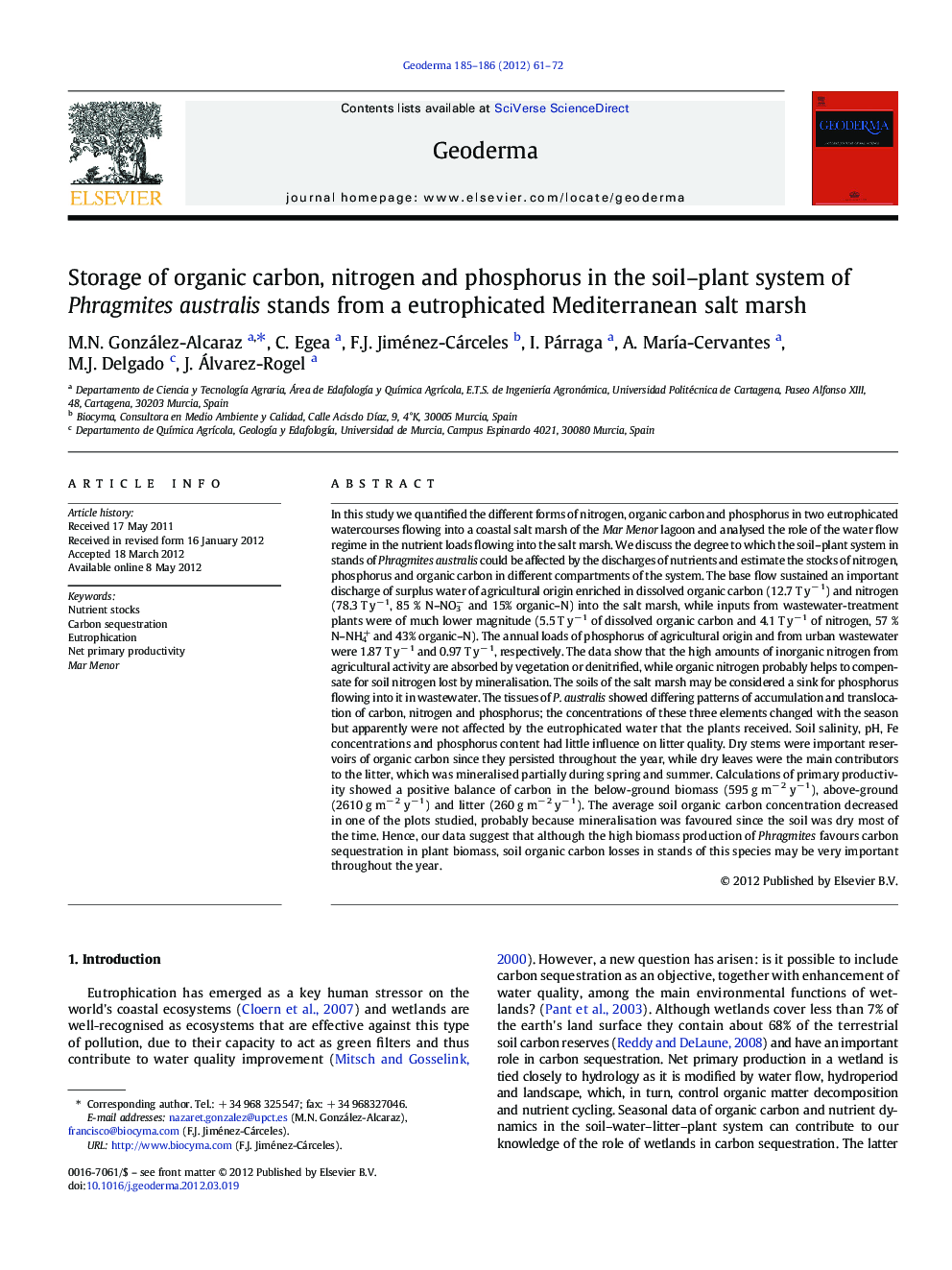| کد مقاله | کد نشریه | سال انتشار | مقاله انگلیسی | نسخه تمام متن |
|---|---|---|---|---|
| 4573823 | 1629495 | 2012 | 12 صفحه PDF | دانلود رایگان |

In this study we quantified the different forms of nitrogen, organic carbon and phosphorus in two eutrophicated watercourses flowing into a coastal salt marsh of the Mar Menor lagoon and analysed the role of the water flow regime in the nutrient loads flowing into the salt marsh. We discuss the degree to which the soil–plant system in stands of Phragmites australis could be affected by the discharges of nutrients and estimate the stocks of nitrogen, phosphorus and organic carbon in different compartments of the system. The base flow sustained an important discharge of surplus water of agricultural origin enriched in dissolved organic carbon (12.7 T y− 1) and nitrogen (78.3 T y− 1, 85 % N–NO3− and 15% organic–N) into the salt marsh, while inputs from wastewater-treatment plants were of much lower magnitude (5.5 T y− 1 of dissolved organic carbon and 4.1 T y− 1 of nitrogen, 57 % N–NH4+ and 43% organic–N). The annual loads of phosphorus of agricultural origin and from urban wastewater were 1.87 T y− 1 and 0.97 T y− 1, respectively. The data show that the high amounts of inorganic nitrogen from agricultural activity are absorbed by vegetation or denitrified, while organic nitrogen probably helps to compensate for soil nitrogen lost by mineralisation. The soils of the salt marsh may be considered a sink for phosphorus flowing into it in wastewater. The tissues of P. australis showed differing patterns of accumulation and translocation of carbon, nitrogen and phosphorus; the concentrations of these three elements changed with the season but apparently were not affected by the eutrophicated water that the plants received. Soil salinity, pH, Fe concentrations and phosphorus content had little influence on litter quality. Dry stems were important reservoirs of organic carbon since they persisted throughout the year, while dry leaves were the main contributors to the litter, which was mineralised partially during spring and summer. Calculations of primary productivity showed a positive balance of carbon in the below-ground biomass (595 g m− 2 y− 1), above-ground (2610 g m− 2 y− 1) and litter (260 g m− 2 y− 1). The average soil organic carbon concentration decreased in one of the plots studied, probably because mineralisation was favoured since the soil was dry most of the time. Hence, our data suggest that although the high biomass production of Phragmites favours carbon sequestration in plant biomass, soil organic carbon losses in stands of this species may be very important throughout the year.
► The soils of the salt marsh may be considered P-sinks, but not N-sinks.
► Soil organic carbon mineralization was favoured during dry periods.
► Dry stems of Phragmites are the main reservoirs of carbon, nitrogen and phosphorus.
► C, N and P in Phragmites changed seasonally, but were not affected by eutrophication.
► Salinity, pH, metals and phosphorous in soils had little influence on litter quality.
Journal: Geoderma - Volumes 185–186, September 2012, Pages 61–72